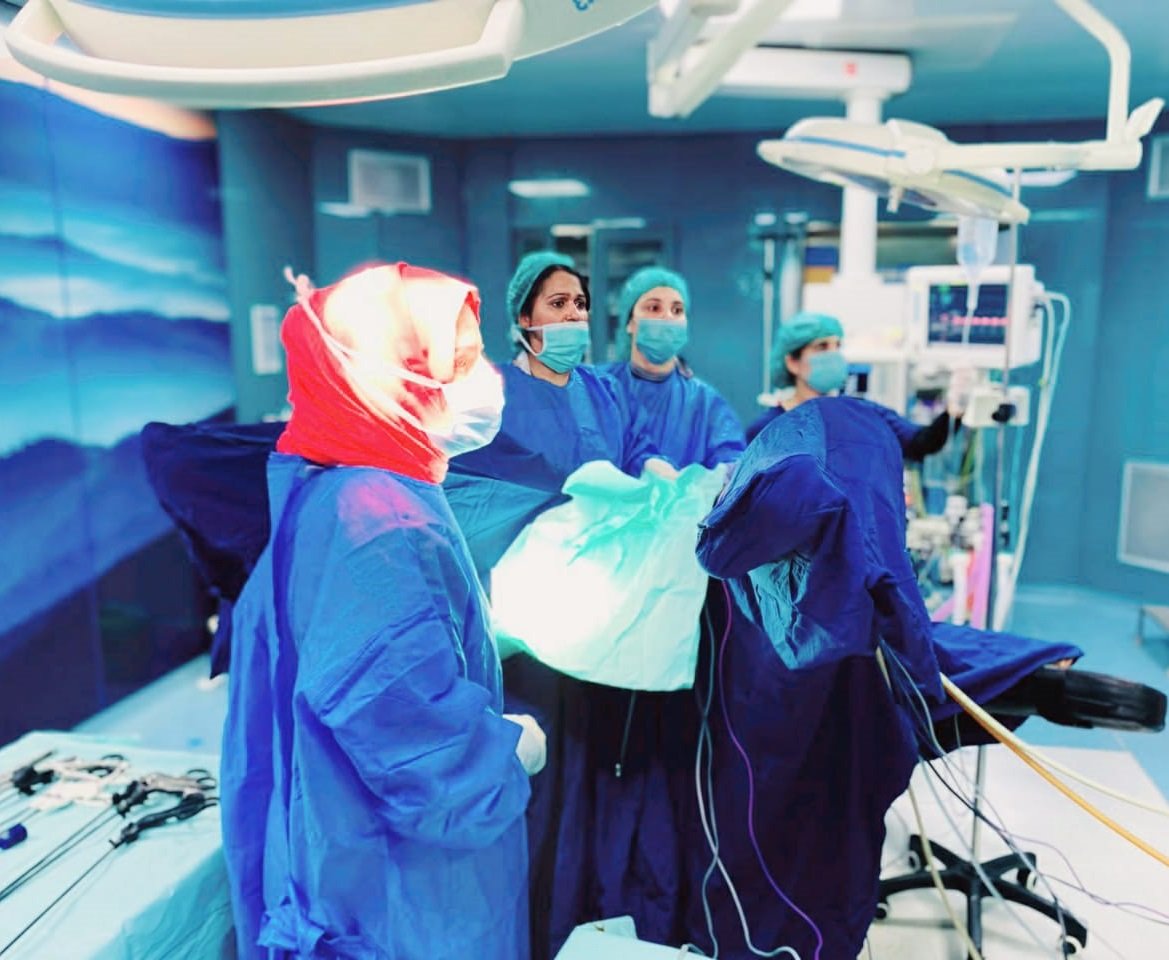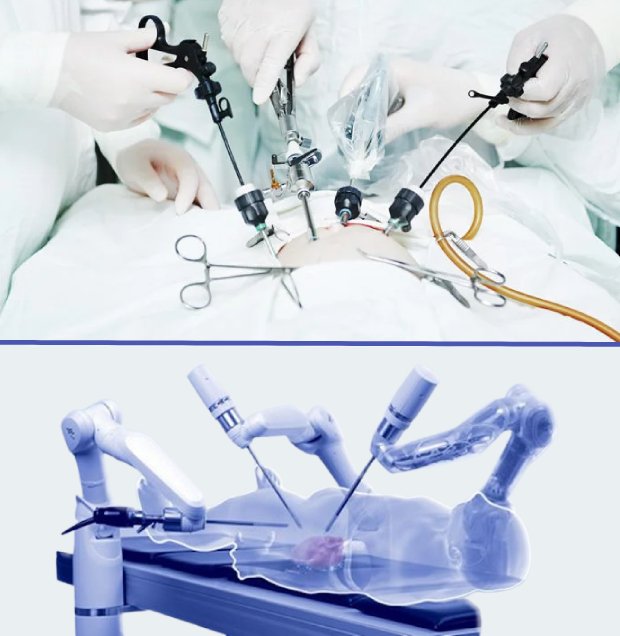Breast Surgery
Home > General Treatments > Breast Surgery

Breast surgery refers to a variety of surgical procedures performed on the breasts to address medical conditions, enhance their appearance or correct breast related issues. There are different types of breast surgeries, each serving a specific purpose.
We are explaining some of the important surgeries that we are doing in Lahore
A breast biopsy is a medical procedure performed to obtain a sample of breast tissue for examination under a microscope. It is used to investigate suspicious lumps, changes, or abnormalities found in the breast during routine screenings or diagnostic imaging, such as mammograms or ultrasound.
The biopsy is conducted to determine whether the breast tissue contains cancerous or non-cancerous cells. It plays a crucial role in the early detection and diagnosis of breast cancer and helps guide appropriate treatment decisions.
There are different types of breast biopsy procedures, including:
Fine Needle Aspiration Biopsy: In this method, a thin needle is used to withdraw a small sample of cells or fluid from the breast lump or mass.
Core Needle Biopsy : A larger needle is used to remove a small core of tissue from the suspicious area in the breast.
Vacuum-Assisted Biopsy: This technique uses a vacuum-powered device to obtain multiple tissue samples during one needle insertion.
Surgical Biopsy: A surgical procedure is performed to remove a larger portion of the suspicious breast tissue for examination.
The type of breast biopsy used depends on various factors, such as the size and location of the breast abnormality, and is determined by the Doctor. A pathologist analyzes the biopsy sample in a laboratory to provide a definitive diagnosis, which helps in formulating a suitable treatment plan if needed.
It is important to note that a breast biopsy is a standard and essential procedure for diagnosing breast conditions, and it is typically performed with local anesthesia. The vast majority of breast biopsies yield benign (non-cancerous) results, but it is a critical step in identifying and addressing potential breast health concerns.

An intraductal papillomectomy is a surgical procedure performed to remove an intraductal papilloma from the breast. An intraductal papilloma is a non-cancerous (benign) growth that develops within the milk ducts of the breast. It often presents as a small, wart-like mass and may cause symptoms such as nipple discharge (bloody or clear fluid) or breast pain.
During the intraductal papillomectomy, a surgeon removes the papilloma and some surrounding breast tissue to ensure complete excision. The procedure is typically performed under local anesthesia, and the surgeon may use a surgical microscope or other imaging techniques to aid in the precise removal of the papilloma.
In most cases, an intraductal papilloma is not associated with breast cancer. However, it is essential to remove it surgically to alleviate symptoms and to rule out any malignancy or atypical changes in the breast tissue. If you notice any breast changes or experience nipple discharge, it is crucial to consult a healthcare provider for proper evaluation and appropriate management.
Intraductal papillomectomy is usually an outpatient procedure and is considered a minimally invasive surgery. The removed tissue is sent to a pathology laboratory for examination to confirm the diagnosis and rule out any other underlying breast conditions. We have best laparoscopic surgeon to do intraductal papillomectomy in Lahore.
A lumpectomy, also known as a partial mastectomy or breast-conserving surgery, is a surgical procedure performed to remove a tumor or abnormal growth from the breast while preserving as much healthy breast tissue as possible. It is commonly used as a treatment for early-stage breast cancer or certain benign breast conditions.
During a lumpectomy, the surgeon removes the tumor along with a surrounding margin of normal breast tissue. The goal is to achieve complete removal of the cancerous or abnormal cells while maintaining the breast's shape and appearance.
Following a lumpectomy, the removed tissue is examined by a pathologist to determine if the margins are clear of cancer cells. If necessary, additional treatments such as radiation therapy may be recommended to further target any remaining cancer cells in the breast.
Lumpectomy is often offered as an alternative to mastectomy for eligible patients with smaller tumors and favorable cancer characteristics. It allows women to retain their breasts while effectively treating the cancer.
It is important to note that the suitability of a lumpectomy as a treatment option depends on various factors, including the size and location of the tumor, the type of breast cancer, and the patient's overall health.
Mastectomy is a surgical procedure in which the entire breast tissue is removed from one or both breasts. It is commonly performed as a treatment for breast cancer or to reduce the risk of developing breast cancer in individuals at high risk due to genetic factors or previous medical history.
There are different types of mastectomy procedures, including:
Total or Simple Mastectomy: In this procedure, the entire breast, including the breast tissue, nipple, and areola, is removed. The underlying chest muscles are usually preserved.
Modified Radical Mastectomy: This surgery involves removing the entire breast, as well as some of the surrounding lymph nodes in the underarm (axillary lymph nodes).
Radical Mastectomy: This type of mastectomy is rarely performed nowadays and involves removing the breast, chest muscles, and axillary lymph nodes. It is typically reserved for advanced cases of breast cancer.
Skin Sparing and Nipple Sparing Mastectomy: In these procedures, the breast tissue is removed while preserving the overlying skin and, in nipple-sparing mastectomy, the nipple and areola are also preserved. These techniques are often used for immediate breast reconstruction.
Mastectomy is considered a major surgery, and the decision to undergo this procedure is usually based on several factors, including the stage of breast cancer, the size and location of the tumor, the presence of multiple tumors, and the patient's personal preferences and medical history.
After mastectomy, patients may choose to undergo breast reconstruction surgery to restore the breast's appearance. Alternatively, some individuals may decide not to pursue reconstruction and instead opt for breast prostheses or breast forms.
Lymph node removal, also known as lymph node dissection or lymphadenectomy, is a surgical procedure in which one or more lymph nodes or groups of lymph nodes are removed from the body. Lymph nodes are small, bean-shaped structures that play a crucial role in the lymphatic system, which helps the body fight infections and filter lymph fluid.
Lymph node removal may be performed for various reasons, including:
Cancer Staging: Lymph node removal is often done to assess whether cancer has spread from its original site to nearby lymph nodes. It helps determine the stage of cancer and the appropriate treatment plan.
Cancer Treatment: In some cases of cancer, especially when cancer cells are found in the lymph nodes, surgical removal of affected lymph nodes may be part of the cancer treatment.
Lymphedema Treatment: Lymph node removal can sometimes lead to a condition called lymphedema, characterized by swelling in the affected area. In selected cases, surgical interventions like lymph node transfer or lymphovenous bypass may be performed to manage lymphedema.
Infection or Inflammation: Lymph node removal may be necessary if a lymph node becomes severely infected, inflamed, or enlarged and does not respond to other treatments.
The extent of lymph node removal depends on the specific medical condition and the surgical approach used. In some cases, only one or a few specific lymph nodes are removed, while in others, a more extensive lymphadenectomy is performed, involving the removal of multiple lymph nodes from a larger area.
The decision to perform lymph node removal is based on a thorough evaluation of the patient's medical condition, diagnostic tests, and discussions with doctor. The benefits and risks of the procedure are carefully weighed to ensure the most appropriate treatment plan for the patient's specific needs.

We proudly stand as the leading breast surgery specialists in Lahore. We offers unmatched expertise and compassionate care. Our team of highly skilled laparoscopic surgeons in Lahore is dedicated to providing best breast surgical procedures tailored to each patient's unique needs. Whether it is breast augmentation, reduction, reconstruction, or addressing various breast conditions. We prioritize patient satisfaction and safety above all else. With most modern techniques, we ensure the best possible outcomes for our patients. Trust in our unmatched experience and comprehensive approach to breast surgery, making us the premier choice for breast care in Lahore.
Contact UsCopyright @ . Design By Blizin Technologies